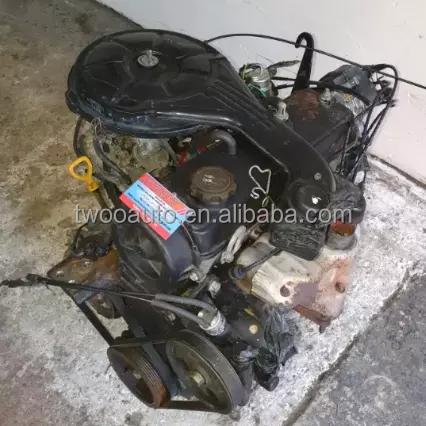Explore the most up to date Patterns in Engine Innovation Via Tazz
In the rapidly developing landscape of automotive modern technology, Tazz stands at the leading edge, highlighting considerable improvements in engine systems that prioritize both innovation and sustainability. tazz. From hybrid engines that enhance gas effectiveness to the introduction of hydrogen fuel cells, the trends shaping modern-day powertrains are not only boosting performance however additionally addressing essential ecological difficulties. As the sector remains to push borders, it is vital to consider how these advancements will certainly affect future transportation options and the broader implications for international energy intake. What lies ahead in this essential transformation?
Hybrid Engine Innovations
Hybrid engine advancements stand for a crucial shift in auto innovation, integrating the benefits of internal combustion engines with electric propulsion systems. This combination not only enhances gas performance however also decreases emissions, meeting significantly rigid ecological laws. By utilizing both energy sources, hybrid engines can maximize efficiency, delivering power when required while conserving fuel during less demanding motoring conditions.
Recent improvements in hybrid technology include enhancements in battery effectiveness and regenerative stopping systems. These advancements permit higher power recuperation during deceleration, which can be rerouted to help in velocity or power accessory systems. In addition, makers are concentrating on light-weight materials and portable styles to make the most of the efficiency of crossbreed powertrains.
The development of plug-in crossbreeds has actually also broadened the market, enabling drivers to bill their automobiles utilizing conventional electrical outlets. This attribute frequently enables considerable all-electric array, further decreasing dependancy on traditional fuels. tazz. As the automobile industry remains to advance, hybrid engine modern technologies are expected to play a critical duty in bridging the void in between conventional automobiles and totally electrical models, supplying a transitional solution that accommodates varied customer needs and preferences
Advances in Electric Powertrains
The automobile landscape is quickly developing, with electric powertrains becoming a leading force in lasting transportation. Developments in electric vehicle (EV) technology are significantly enhancing performance, efficiency, and individual experience. Secret innovations include enhancements in battery chemistry, which have enhanced energy density, decreased charging times, and extended general battery life.
Solid-state batteries, as an example, promise to change the marketplace by offering greater safety and efficiency compared to conventional lithium-ion cells. Moreover, advancements in regenerative stopping systems are making it possible for vehicles to recuperate energy during slowdown, adding to overall efficiency.
Along with battery innovation, electric motor designs are coming to be much more sophisticated. Technologies such as incorporated electric motors and progressed thermal management systems are helping to enhance power delivery and reduce weight, ultimately boosting car dynamics.

Jointly, these advancements emphasize the dedication to change towards cleaner, more reliable transport solutions, placing electrical powertrains at the forefront of automobile innovation.
The Increase of Hydrogen Fuel Cells
Progressively, hydrogen fuel cells are acquiring traction as a feasible alternative to traditional inner burning engines and battery electric lorries. This innovation uses the chemical energy stored in hydrogen, converting it right into power with an electrochemical reaction with oxygen. The main result of this process is water, making hydrogen gas cells an eco-friendly option with zero emissions at the tailpipe.

Car manufacturers are progressively buying hydrogen fuel cell modern technology, recognizing its possibility for long-range applications and fast refueling capabilities that measure up to standard fuels. Furthermore, sectors have a peek at this site such as heavy-duty transportation and public transportation are especially well-suited for hydrogen gas cells, where battery electric options might fall short as a result of why not find out more weight and array constraints.
As research and investment proceed to broaden, hydrogen fuel cells are poised to play a significant role in the future landscape of clean transport and power options.
Enhancements in Internal Burning Engines
Technologies in interior combustion engine (ICE) innovation are changing typical vehicles to fulfill modern-day environmental criteria and efficiency assumptions. Among the most considerable enhancements includes the integration of innovative gas shot systems. These systems optimize the air-fuel combination, enhancing combustion efficiency and resulting in reduced exhausts. Straight gas injection, as an example, permits far better atomization of gas, resulting in more total burning and boosted power result.
Furthermore, turbocharging has gotten prestige, enabling smaller engines to deliver higher efficiency without the weight of larger engines - tazz. This innovation not only improves efficiency but additionally adds to lower gas usage. Variable shutoff timing systems are likewise being improved, making it possible for engines to adapt to numerous driving problems for boosted torque and responsiveness
Additionally, making use of light-weight products in engine building is coming to be typical, further enhancing gas effectiveness by minimizing general car weight. Engine control units (ECUs) go to the website are increasingly advanced, enabling real-time adjustments that maximize efficiency and emissions.
These improvements jointly symbolize an essential shift in ICE technology, aligning with international sustainability goals while still providing the efficiency motorists anticipate from their automobiles. As the market develops, these improvements remain to form the future of conventional automobile engineering.
Future Fads in Engine Efficiency
Substantial innovations in engine effectiveness are expected as suppliers concentrate on integrating cutting-edge modern technologies to meet stringent ecological policies and customer needs. The shift in the direction of electrification, crossbreed systems, and different gas is improving the vehicle landscape, driving innovations that improve fuel economic climate and minimize discharges.
One of the key fads is the execution of innovative materials and manufacturing strategies. High-strength alloys and light-weight composites add to reduced vehicle weight, hence boosting total effectiveness. Furthermore, the fostering of turbocharging and variable shutoff timing modern technologies enables boosted power output from smaller engines, additionally boosting gas economy.

Verdict
In final thought, the expedition of engine innovation discloses considerable advancements that prioritize sustainability and performance. Developments in crossbreed engine systems, electric powertrains, and hydrogen gas cells show a commitment to minimizing emissions while improving efficiency. Furthermore, enhancements in inner combustion engines and an emphasis on light-weight materials add to total engine efficiency. As the auto industry remains to progress, these fads will play a vital duty in shaping a cleaner and more sustainable future for transport.
From crossbreed engines that maximize fuel effectiveness to the introduction of hydrogen gas cells, the patterns forming modern-day powertrains are not just boosting efficiency yet additionally resolving critical environmental challenges.Crossbreed engine innovations stand for a crucial change in auto modern technology, incorporating the advantages of inner burning engines with electrical propulsion systems.Furthermore, turbocharging has acquired prominence, allowing smaller sized engines to supply greater performance without the weight of larger engines. Additionally, the fostering of turbocharging and variable shutoff timing innovations allows for improved power result from smaller sized engines, even more enhancing fuel economic situation.
Renovations in interior combustion engines and an emphasis on light-weight materials contribute to total engine effectiveness.